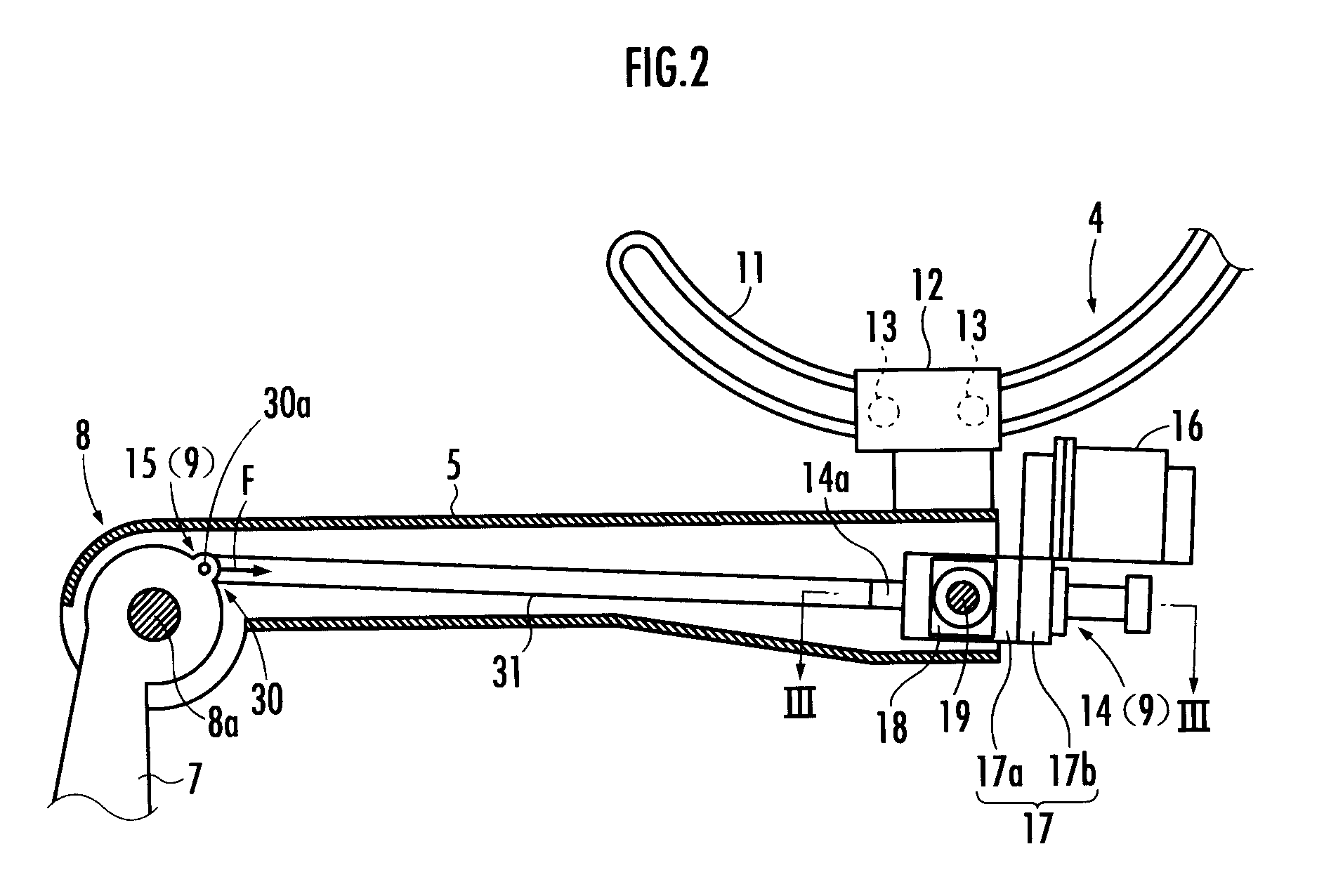Walking assistance device
a technology of assistance device and walking aid, which is applied in the field of walking assistance device, can solve the problems of poor durability, low rotational accuracy, and screw inevitably having a long stroke, and achieve the effects of reducing the diameter of the actuator, facilitating movement, and facilitating movemen
- Summary
- Abstract
- Description
- Claims
- Application Information
AI Technical Summary
Benefits of technology
Problems solved by technology
Method used
Image
Examples
Embodiment Construction
[0022]The following will describe a walking assistance device A according to an embodiment of the present invention with reference to the accompanying drawings.
[0023]As illustrated in FIG. 1, the walking assistance device A is provided with a seating assembly 1 serving as a load transmit assembly, a pair of right and left foot-worn assemblies 2 and 2 to be attached to the feet of individual legs of a user (not shown), and a pair of right and left leg links 3 and 3 which connect the foot-worn assemblies 2 and 2, respectively, to the seating assembly 1. The right and left foot-worn assemblies are laterally symmetrical to each other and share the same structure. The right and left leg links 3 and 3 are also laterally symmetrical to each other and share the same structure. In the description of the present embodiment, the lateral direction of the walking assistance device A means the lateral direction of the user having the foot-worn assemblies 2 and 2 attached to his or her feet (the d...
PUM
 Login to View More
Login to View More Abstract
Description
Claims
Application Information
 Login to View More
Login to View More - R&D
- Intellectual Property
- Life Sciences
- Materials
- Tech Scout
- Unparalleled Data Quality
- Higher Quality Content
- 60% Fewer Hallucinations
Browse by: Latest US Patents, China's latest patents, Technical Efficacy Thesaurus, Application Domain, Technology Topic, Popular Technical Reports.
© 2025 PatSnap. All rights reserved.Legal|Privacy policy|Modern Slavery Act Transparency Statement|Sitemap|About US| Contact US: help@patsnap.com



